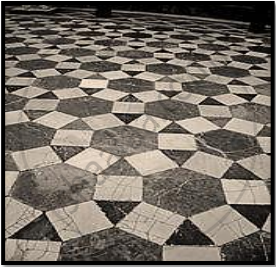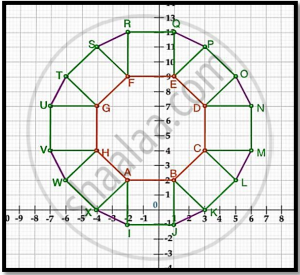Advertisements
Advertisements
Question
Write the formula for the area of the triangle having its vertices at (x1, y1), (x2, y2) and (x3, y3).
Solution
The formula for the area ‘A’ encompassed by three points
`(x_1 , y_1 ) , (x_2 , y_2) " and " (x_3 , x_3)` is given by the formula,
`A = 1/2 | [x_1 - x_2 y_1 - y_ 2 ] , [ x_2 - x_3 y_2 - y_ 3] |`
`A = 1/2 |(x_1 - x_2 )(y_2 - y_3 )-(x_2 -x_3)(y_1 - y_2)|`
The area ‘A’ encompassed by three points `(x_1 , y_1 ) , (x_2 , y_2) " and " (x_3 , x_3)` is also given by the formula,
`A = 1/2 |x_1 (y_2 - y_3) + x_2 (y_3 - y_1 ) + x_3 (y_1 - y_2 )|`
APPEARS IN
RELATED QUESTIONS
Find the centre of the circle passing through (5, -8), (2, -9) and (2, 1).
Show that the points (−3, 2), (−5,−5), (2, −3) and (4, 4) are the vertices of a rhombus. Find the area of this rhombus.
Three consecutive vertices of a parallelogram are (-2,-1), (1, 0) and (4, 3). Find the fourth vertex.
If the point C ( - 2,3) is equidistant form the points A (3, -1) and Bx (x ,8) , find the value of x. Also, find the distance between BC
Points P, Q, and R in that order are dividing line segment joining A (1,6) and B(5, -2) in four equal parts. Find the coordinates of P, Q and R.
ABCD is rectangle formed by the points A(-1, -1), B(-1, 4), C(5, 4) and D(5, -1). If P,Q,R and S be the midpoints of AB, BC, CD and DA respectively, Show that PQRS is a rhombus.
Find the area of the triangle formed by joining the midpoints of the sides of the triangle whose vertices are A(2,1) B(4,3) and C(2,5)
If the vertices of ΔABC be A(1, -3) B(4, p) and C(-9, 7) and its area is 15 square units, find the values of p
ΔXYZ ∼ ΔPYR; In ΔXYZ, ∠Y = 60o, XY = 4.5 cm, YZ = 5.1 cm and XYPY =` 4/7` Construct ΔXYZ and ΔPYR.
The perpendicular distance of the point P (4, 3) from x-axis is
If R (x, y) is a point on the line segment joining the points P (a, b) and Q (b, a), then prove that x + y = a + b.
Find the value of k, if the points A (8, 1) B(3, −4) and C(2, k) are collinear.
Find the value(s) of k for which the points (3k − 1, k − 2), (k, k − 7) and (k − 1, −k − 2) are collinear.
If \[D\left( - \frac{1}{5}, \frac{5}{2} \right), E(7, 3) \text{ and } F\left( \frac{7}{2}, \frac{7}{2} \right)\] are the mid-points of sides of \[∆ ABC\] , find the area of \[∆ ABC\] .
Find the coordinates of the point which is equidistant from the three vertices A (\[2x, 0) O (0, 0) \text{ and } B(0, 2y) of ∆\] AOB .
The length of a line segment joining A (2, −3) and B is 10 units. If the abscissa of B is 10 units, then its ordinates can be
Write the equations of the x-axis and y-axis.

In the above figure, seg PA, seg QB and RC are perpendicular to seg AC. From the information given in the figure, prove that: `1/x + 1/y = 1/z`
If the coordinates of the two points are P(–2, 3) and Q(–3, 5), then (abscissa of P) – (abscissa of Q) is ______.
A tiling or tessellation of a flat surface is the covering of a plane using one or more geometric shapes, called tiles, with no overlaps and no gaps. Historically, tessellations were used in ancient Rome and in Islamic art. You may find tessellation patterns on floors, walls, paintings etc. Shown below is a tiled floor in the archaeological Museum of Seville, made using squares, triangles and hexagons.

A craftsman thought of making a floor pattern after being inspired by the above design. To ensure accuracy in his work, he made the pattern on the Cartesian plane. He used regular octagons, squares and triangles for his floor tessellation pattern

Use the above figure to answer the questions that follow:
- What is the length of the line segment joining points B and F?
- The centre ‘Z’ of the figure will be the point of intersection of the diagonals of quadrilateral WXOP. Then what are the coordinates of Z?
- What are the coordinates of the point on y-axis equidistant from A and G?
OR
What is the area of Trapezium AFGH?
